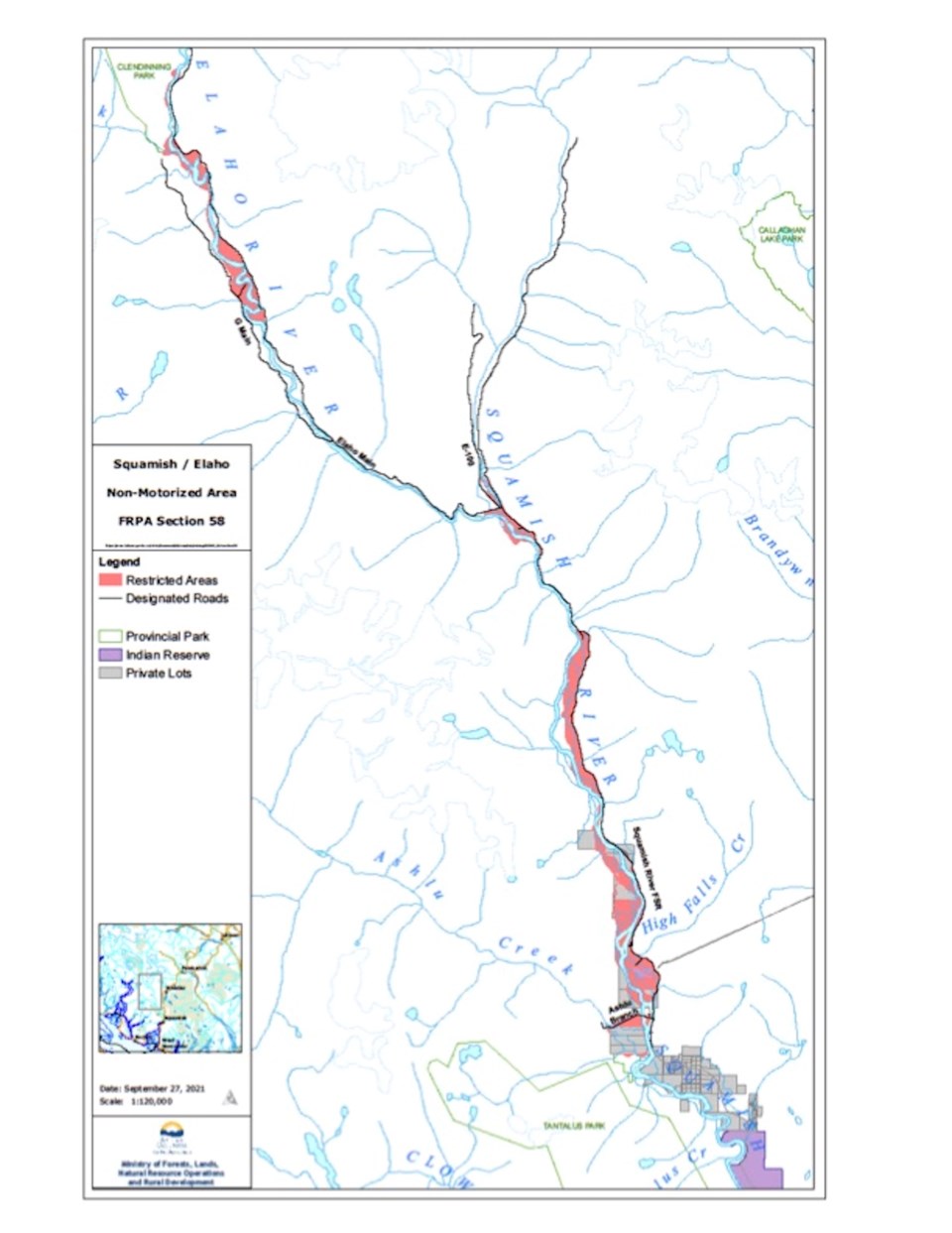To preserve First Nations archaeological sites and protect sensitive habitat, recreational vehicle use is being restricted in Upper Squamish.
Recreation Sites and Trails, a branch of the provincial Ministry of Forests, Lands and Natural Resource Operations, is announcing that as of March 21, motorized vehicles will not be allowed on the floodplain and riparian areas of the Squamish, Ashlu and Elaho river valleys.
"The purpose of this order is to protect the Sḵwx̱wú7mesh Úxwumixw [Squamish Nation] archaeological sites and cultural values and to protect critical floodplain wildlife habitat in accordance with the recommendations of the Squamish Valley Recreation Management Plan," reads the notice.
That plan was commissioned by Recreation Sites and Trails in 2017, to deal with the many issues facing the increasingly busy Upper Squamish area.
This restriction was one of the recommendations of the plan.
First Nations' Values
“This important step taken by the province is a necessary one,” said Nation Spokesperson Wilson Williams (Sxwíxwtn). “The Upper Squamish River basin has great cultural, archeological, and environmental significance for our people. We need to ensure that access is restricted to preserve this sacred space and critical fish spawning and wildlife habitat for our Nation and the generations of Skwxwú7mesh still to come.”
Habitat values
"Why it's necessary is we've seen an uptick in the last two years or so, maybe since the beginning of COVID, where we've seen a dramatic increase in recreation, but we've also seen a really big increase in the interest in overlanding or off-roading, beyond just on rough roads and tracks," said district recreation officer Alistair McCrone.
"[They are] actually going onto the sandbars, driving around going into the river etc. with more specialized vehicles than you'd normally see."
Squamish River floodplain is an extremely significant habitat for salmon, birds and grizzly bears and other animals that feed there because it is flat and easy to get around on, McCrone explained.
"There are two floodplain habitats that are basically intact in all of the southwestern coast of B.C., the Lillooet River and the Squamish River; both are virtually intact. They're very unique habitats. And that's important. This regulation is going into effect to protect extremely limited habitat."
He noted that in the spring forage when much of the valley is covered in snow, the floodplain supplies food for upwards of 50 grizzly bears and 100-odd black bears, as well as for elk and moose.
The regulation was developed through extensive consultation, according to McCrone.
He noted he is still accepting public feedback on this order. (Email him at [email protected].)
The restriction is intended to go into effect 12 months a year, and it is a legally binding order.
It applies to any recreational motorized vehicle that does not require human power to move, though it does not apply to police, search and rescue vehicles, or boats.
The vehicle does not have to be operating to violate the order. It applies whether parked or moving, McCrone said.
The map shows the areas impacted. Signage will be in place to make it clear what areas are impacted.
Simply put, it applies to the areas that get covered with water at some point in the year, he said.
"It's basically everything from the start of the Forest Service Road, when you leave pavement, to the left side of the road, all the way across the river to the bottom of the steep valley side that comes right down to it up to where it comes together at about...19 kilometres up the road," McCrone said.
It does not impact the existing camping sites and the road uphill of the floodplain.
While violating the order is worth a $115 ticket, McCrone said there will be a period of education first before those are issued.
"So that people are aware of this before we start coming down with writing tickets," he said.
Clint Goyette, who owns Valley Fishing Guides, which operates in the Squamish Valley, said it is a restriction he is happy to see being implemented.
He said he has personally seen folks on quads, in Jeeps and 4X4s going through salmon streams, he said.
"People have been driving on the floodplain for quite some time now and it's just gotten a lot worse," he said. "There just seems to be a lot more sort of ignorance out there with regards to fish habitat and wildlife habitat and the use of vehicles in that habitat."
*Please note, this story has been updated since was first posted to further explain the area impacted by the restriction.




